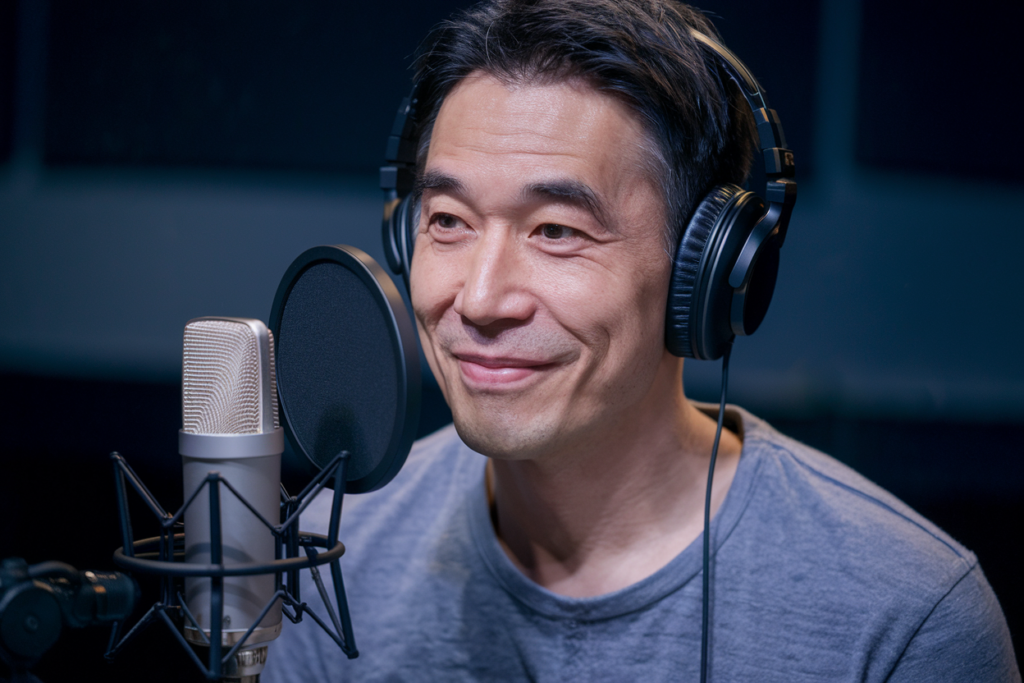Key Takeaways
- Cultural Nuances Matter: Localization issues often stem from the loss of cultural subtleties, making it essential to understand and convey these nuances for authentic storytelling.
- Language Barriers Challenge Translation: Direct translations can lead to awkward dialogue; attention to idiomatic expressions and subtle meanings is crucial for maintaining intent.
- Voiceover Choices Impact Engagement: Selecting the right voice talent who understands cultural context enhances emotional connection, ensuring characters resonate with international audiences.
- Omissions Affect Narrative Flow: Cutting culturally irrelevant scenes without proper context can confuse viewers, highlighting the importance of preserving narrative integrity during localization.
- Collaboration is Key: Working with local experts and community members during localization can provide valuable insights, leading to more relatable and accurate adaptations.
- Understanding Audience Perspectives: Recognizing differences in Western vs. Eastern storytelling approaches helps tailor content that resonates better with diverse audiences.
Ever wondered why some Japanese media just doesn’t hit the mark when it’s localized for Western audiences? Localization issues in Japanese media can turn an engaging story into a confusing mess. From cultural nuances to language barriers, these challenges can leave viewers scratching their heads instead of enjoying the experience.
Overview of Localization Issues in Japanese Media
Localization issues in Japanese media present significant challenges for adaptation to Western audiences. Cultural nuances often get lost in translation, leading to misunderstandings that can alter the intended experience. For example, humor that resonates with a Japanese audience might not translate well due to different cultural references or comedic styles.
Language barriers contribute heavily to these localization challenges. Subtle meanings and context found within the original language may not have direct equivalents in English. This discrepancy can result in dialogue that feels awkward or out of place when voiced by voice artists unfamiliar with the source material.
Voiceover decisions also play a critical role in how localized content is received. The choice of voice talent must align with character portrayal and cultural context; otherwise, it risks alienating viewers. A mismatch between character design and voice over talent leads to disconnects that detract from emotional engagement.
Furthermore, some localizations cut scenes deemed culturally irrelevant without considering their impact on narrative flow. These omissions can create gaps in storytelling that confuse viewers who aren’t familiar with the original work’s context or intent.
Addressing localization issues requires careful attention to cultural subtleties, language fidelity, and suitable voiceover choices for an authentic viewer experience.
Cultural Sensitivity and Context
Cultural sensitivity plays a vital role in the localization of Japanese media. Understanding context ensures that the essence of the story remains intact while resonating with an international audience.
Language Nuances
Language nuances often pose significant challenges during localization. Subtle meanings, idiomatic expressions, and humor may not translate directly into English, leading to awkward dialogue or lost intent. For example, a joke that relies on wordplay in Japanese might become flat when translated literally. Engaging voice talent who can convey these subtleties through their delivery enhances comprehension and emotional impact. Choosing the right voice artist helps maintain character integrity while ensuring viewers connect with the narrative on a deeper level.
Symbolism and Metaphors
Symbolism and metaphors are abundant in Japanese media but may confuse viewers unfamiliar with cultural references. An object or action that holds deep meaning within Japanese culture might seem trivial or irrelevant to a Western audience without proper context. For instance, cherry blossoms symbolize beauty and transience; if this is omitted or poorly explained during localization, it detracts from character motivations and themes. Skilled voice actors can bridge this gap by providing nuanced performances that reflect underlying meanings, helping audiences appreciate these symbols as intended by the creators.
Challenges in Translation
Localization of Japanese media presents unique challenges, particularly in translation. Cultural nuances and language intricacies can create significant obstacles, transforming an engaging story into a puzzling experience for viewers.
Accuracy vs. Adaptation
Balancing accuracy and adaptation proves essential in translation. You want to maintain the original meaning while making content relatable for the target audience. Sometimes, direct translations miss the mark, leading to confusion or misinterpretation. Adapting phrases or scenes may better convey intent but risks straying from the original work’s essence. Finding skilled voice talent who understands these subtleties enhances this process; their performances can effectively bridge gaps between cultures.
Idiomatic Expressions
Idiomatic expressions often present notable hurdles during localization. Phrases that carry deep cultural significance might not resonate with those unfamiliar with Japanese context. For instance, translating a common saying literally could lead to misunderstandings among Western audiences. Engaging voice actors familiar with both languages ensures these expressions are conveyed authentically, capturing their intended meanings without sacrificing nuance. This attention to detail helps preserve the emotional impact of dialogue and enriches viewers’ experiences with localized content.
Impact on Audience Reception
Localization issues significantly affect how audiences perceive Japanese media. Misunderstandings can arise when cultural nuances and language barriers distort the original storytelling, leading to confusion rather than engagement. The essence of a story often gets lost in translation, especially with humor that relies heavily on specific cultural references.
Western vs. Eastern Perspectives
Different perspectives shape audience reception across cultures. In Western contexts, viewers may prioritize directness and clarity in dialogue, while Eastern narratives often embrace subtlety and layered meanings. This disparity means that an engaging storyline might not resonate if localizations fail to account for these differences. For instance, idiomatic expressions unique to Japanese culture may confuse Western audiences if translated literally, stripping them of their intended emotional weight.
Case Studies of Popular Media
Examining popular media highlights these localization challenges effectively. Take anime series as an example: many successful shows face backlash for voiceover choices that don’t align with characters’ personalities or emotional arcs. When voice actors convey emotions inaccurately due to poor translations or mismatched portrayals, viewers disconnect from the characters they once found relatable.
Similarly, films like “Your Name” demonstrate how vital context is for symbolism—cherry blossoms carry deep meaning in Japan but may leave international audiences puzzled without proper context in localization efforts. Thoughtful adaptations enhance viewer understanding and appreciation by maintaining cultural integrity while making content relatable.
Through careful attention to these factors—cultural subtleties, accurate translations, and appropriate voiceover talent—you can create localized media that resonates authentically with diverse audiences worldwide.
Solutions and Best Practices
To address localization issues in Japanese media, implementing effective solutions is crucial. Understanding the significance of culture and context enhances viewer engagement and comprehension.
Collaboration with Local Experts
Collaborating with local experts ensures cultural nuances are accurately represented. These professionals provide insights into societal norms, idiomatic expressions, and humor that may not translate well without context. Engaging native speakers as translators or consultants can help maintain the original intent while making content relatable for Western audiences. This collaboration results in translations that resonate more deeply with viewers, bridging gaps caused by language barriers.
Community Involvement
Involving community members during the localization process offers valuable feedback on how elements translate culturally. Focus groups containing diverse backgrounds can highlight potential misunderstandings or areas needing clarification. Additionally, gathering input from fans of the original media fosters authenticity and respect for source material. Incorporating this feedback leads to a final product that honors its roots while appealing to new audiences.
By focusing on these strategies—collaboration with local experts and community involvement—you create localized content that captures the essence of Japanese media while ensuring accessibility for viewers familiarizing themselves with this rich storytelling tradition.
Conclusion
Navigating localization issues in Japanese media is crucial for enhancing viewer experience. By understanding the cultural nuances and language barriers, you can appreciate how they impact storytelling. When done right, localization can bridge gaps between cultures and retain the essence of the original content.
Engaging skilled translators and voice talent who grasp these subtleties goes a long way in creating authentic connections with your audience. Prioritizing accuracy while ensuring relatability makes it possible to convey deep meanings without losing intent.
As you explore Japanese media, consider how these factors shape your viewing experience and influence your understanding of diverse narratives. Embracing cultural context enriches not just individual stories but also fosters greater appreciation for global creativity.
Frequently Asked Questions
What are the main challenges of localizing Japanese media for Western audiences?
Localization challenges include cultural nuances, language barriers, and the loss of humor or context. These issues can lead to misunderstandings that detract from the original story’s engagement and emotional resonance.
How do cultural nuances affect localization?
Cultural nuances often get lost in translation, especially humor that relies on specific references. This can confuse viewers and dilute the intended impact, making stories feel disjointed or difficult to understand.
Why is voice talent important in localization?
Choosing the right voice talent is crucial as mismatches between character portrayal and voiceover can alienate viewers. Skilled actors convey emotions and subtleties essential to maintaining narrative integrity and viewer engagement.
How do language barriers complicate translation?
Language barriers introduce difficulties when subtle meanings lack direct English equivalents. This can result in awkward dialogue or misinterpretation, hindering audience comprehension of the story’s intent.
What role does cultural sensitivity play in localization?
Cultural sensitivity ensures that localized content retains its original essence while being relatable to a new audience. Understanding cultural context helps avoid confusion and enhances viewer connection with the material.
Why are idiomatic expressions significant in translation?
Idiomatic expressions carry deep cultural significance. If translated literally, they may lose their meaning or intent, leading to misunderstandings for Western audiences unfamiliar with those phrases.
How can collaboration improve localization efforts?
Collaboration with local experts ensures that translations maintain authenticity while resonating with target audiences. Engaging native speakers provides insights into cultural subtleties necessary for effective storytelling.
What case studies illustrate localization challenges?
Popular media like anime and films such as “Your Name” highlight how voiceover choices and contextual symbolism impact audience reception due to differing Eastern and Western narrative styles.
What best practices should be followed during localization?
Best practices include collaborating with native speakers for accurate translations, involving community members for feedback on cultural references, and ensuring skilled voice actors convey nuanced performances effectively.







